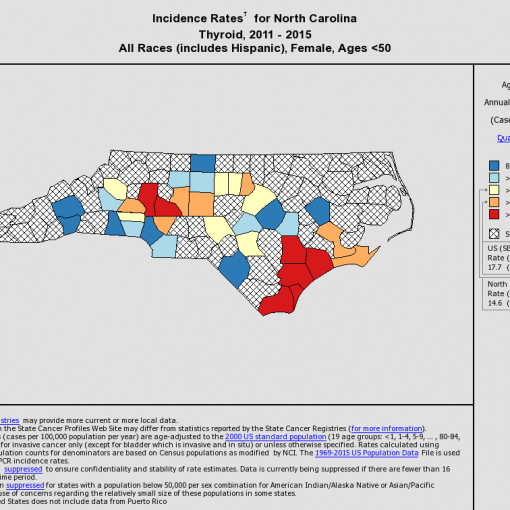By Sammy DiLoreto, Summer Research Intern in Dr. Heather Stapleton’s Lab
As a rising second year Master of Environmental Management student focusing on environmental chemistry, I’ve learned a great deal about the many different chemicals we are exposed to in our daily lives. We are exposed at home, at work, in our cars, etc. Duke University researchers like Heather Stapleton, Ph.D. and Kate Hoffman, Ph.D. are interested in these exposures and understanding what products and aspects of our indoor environments are exposing us to chemicals. As a summer intern with Duke’s Superfund Research Center, I got the opportunity to work with Drs. Stapleton and Hoffman and learn about the various ways in which we can measure human exposure and effects to different chemicals in our indoor environments.
Biomarkers, such as urine and blood samples, are often used to characterize chemical exposure, but they have some downsides. Collecting these samples can be invasive and biomarkers only provide a snapshot of chemical exposure from when the sample was taken. Also, some chemicals can be metabolized and excreted quickly, so depending on when exposure occurred, these chemicals may not show up in blood or urine samples. Real world exposures are not limited to just one chemical at a time, and everyone is exposed to different chemicals in different environments. This means that many study participants would be needed to assess real world exposures if biomarkers are all we use. With these disadvantages of using biomarkers, wouldn’t it be great if there was a new sampling method that is not invasive and can characterize chemical exposure over time? Well, there is…remember those silicone wristbands that you would receive at fundraisers? Turns out they are an excellent way to sample chemical exposure.
Kim Anderson, Ph.D., and her colleagues at Oregon State University developed the wristband and extraction method (Mishamandani, 2014). The aim of their initial study was to test silicone wristbands as a new personal passive sampler method for measuring chemical exposure. Passive sampling depends on diffusion to allow chemicals to adsorb to a surface, but current passive sampling devices involve extensive preparation and/or are only designed to collect a small number of chemicals. For these reasons, Anderson and her team wanted to test silicone wristbands as a new personal passive sampler. After testing their laboratory method to extract chemicals from the wristbands, they were able to detect 49 compounds (O’Connell et al., 2014). This study confirmed that wristbands can be used as passive samplers to characterize chemical concentrations over time for a large number of chemicals, thus expanding the field of passive sampling.
So how do these wristbands collect chemicals and what makes them so good at it? Wristbands adsorb chemicals from the air, water, and even from the skin of the person wearing it. The chemicals remain sorbed to the silicone, which mimics the body’s absorption process. Compared to urine and blood biomarkers, wristbands are non-invasive (Young et al., 2021). Studies have shown that chemical concentrations in wristbands are significantly correlated with concentrations in blood and urine biomarkers, therefore they are good indicators of what is actually in our bodies (Hoffman et al., 2021). In contrast to other biomarkers, wristbands can capture chemical exposures over time. Another advantage to wristband sampling is that wristbands can be worn at specific times and in specific locations. For example, in the Levasseur et al. (2022) study, firefighters were asked to wear a wristband when on-duty and a separate wristband when off-duty to analyze the differences in chemical exposure when on-duty compared to off-duty. The final and one of the most important benefits of the use of wristbands as a passive sampler is that they are inexpensive.
Due to all their advantages, the Stapleton lab is currently working on a variety of projects utilizing wristbands as the sampling technique. As a part of my internship this summer, I analyzed the firefighter wristbands collected from Levasseur et al. (2022) study for a few other chemicals. It has been a great experience to learn about the use of wristbands as a novel sampling technique and the extraction method. I’m excited to see what further research questions can be answered by the use of silicone wristbands!
—
References
Hoffman, K., Levasseur, J. L., Zhang, S., Hay, D., Herkert, N. J., & Stapleton, H. M. (2021). Monitoring Human Exposure to Organophosphate Esters: Comparing Silicone Wristbands with Spot Urine Samples as Predictors of Internal Dose. Environmental Science & Technology Letters, 8(9), 805–810. https://doi.org/10.1021/acs.estlett.1c00629
Levasseur, J. L., Hoffman, K., Herkert, N. J., Cooper, E., Hay, D., & Stapleton, H. M. (2022). Characterizing firefighter’s exposure to over 130 SVOCs using silicone wristbands: A pilot study comparing on-duty and off-duty exposures. The Science of the total environment, 834, 155237. Advance online publication. https://doi.org/10.1016/j.scitotenv.2022.155237
Mishamandani, S. (2014, April). Silicone wristbands facilitate exposome study. Environmental Factor – NIEHS. https://factor.niehs.nih.gov/2014/4/science-wristbands/index.htm
Young, A. S., Herkert, N., Stapleton, H. M., Cedeño Laurent, J. G., Jones, E. R., MacNaughton, P., Coull, B. A., James-Todd, T., Hauser, R., Luna, M. L., Chung, Y. S., & Allen, J. G. (2021). Chemical contaminant exposures assessed using silicone wristbands among occupants in office buildings in the USA, UK, China, and India. Environment international, 156, 106727. https://doi.org/10.1016/j.envint.2021.106727






